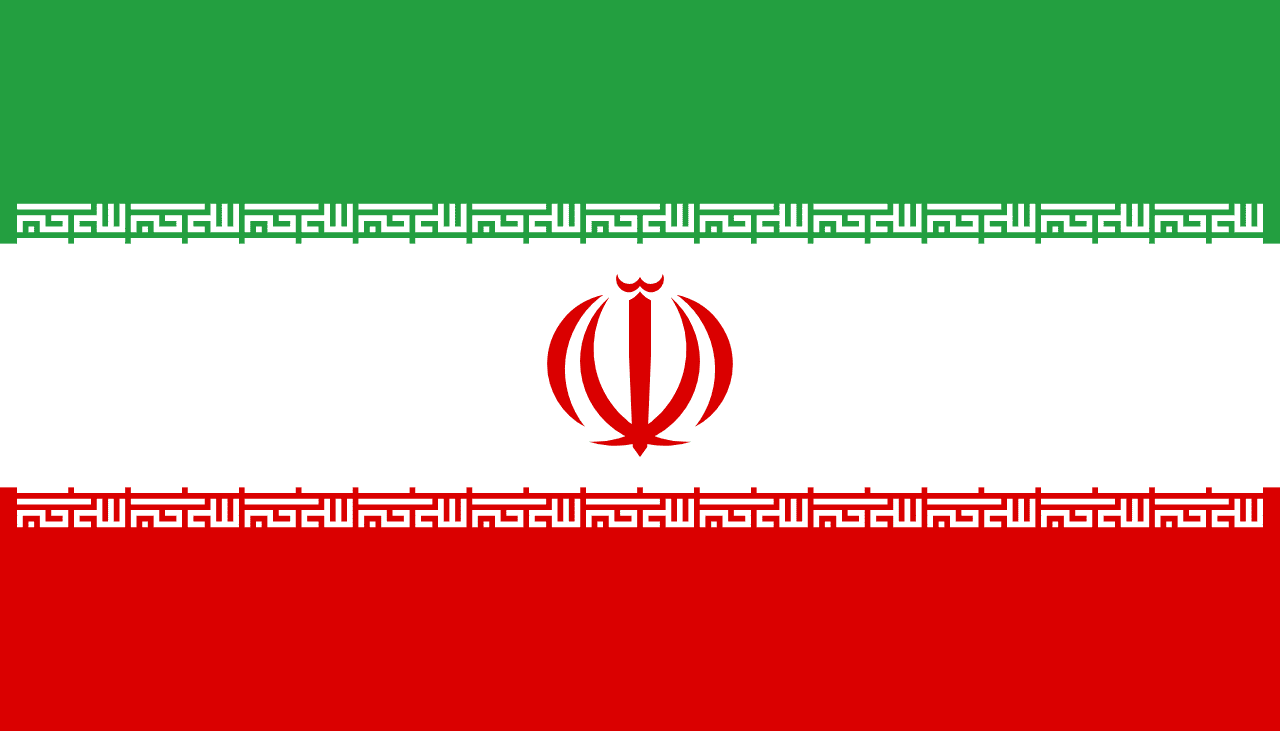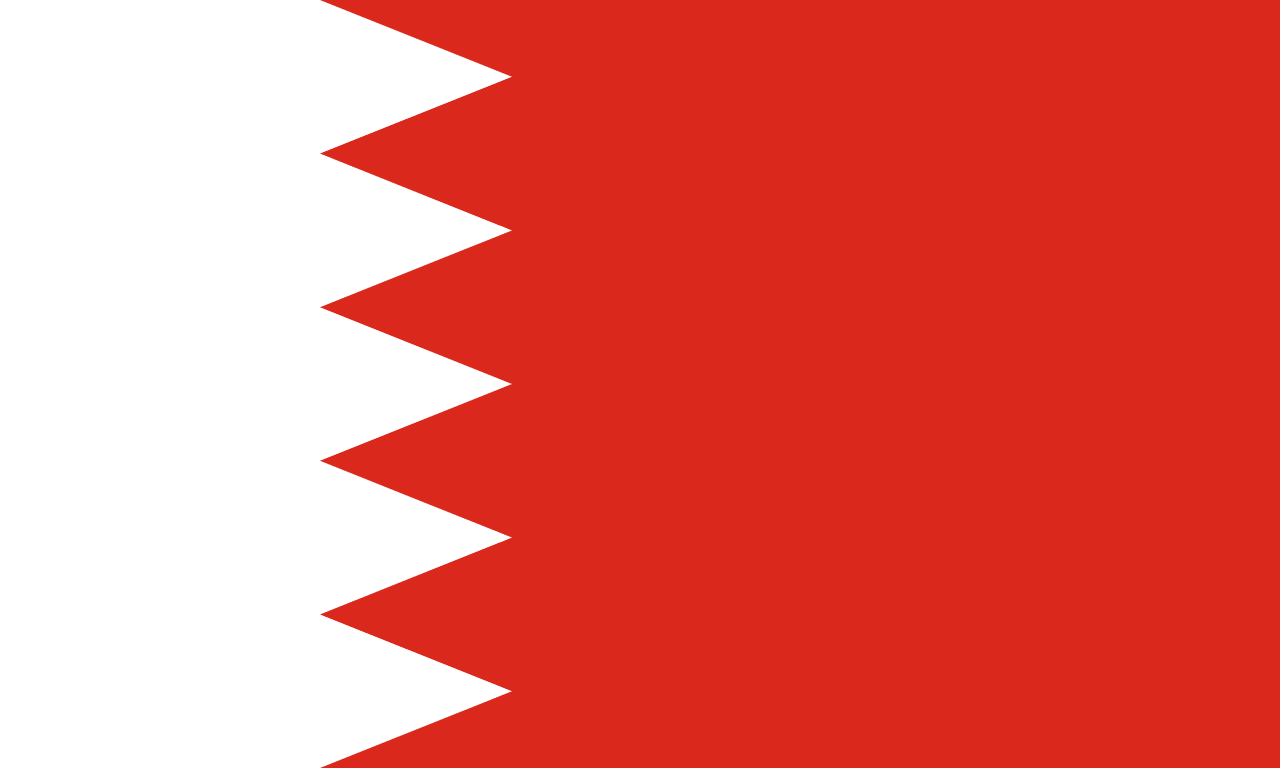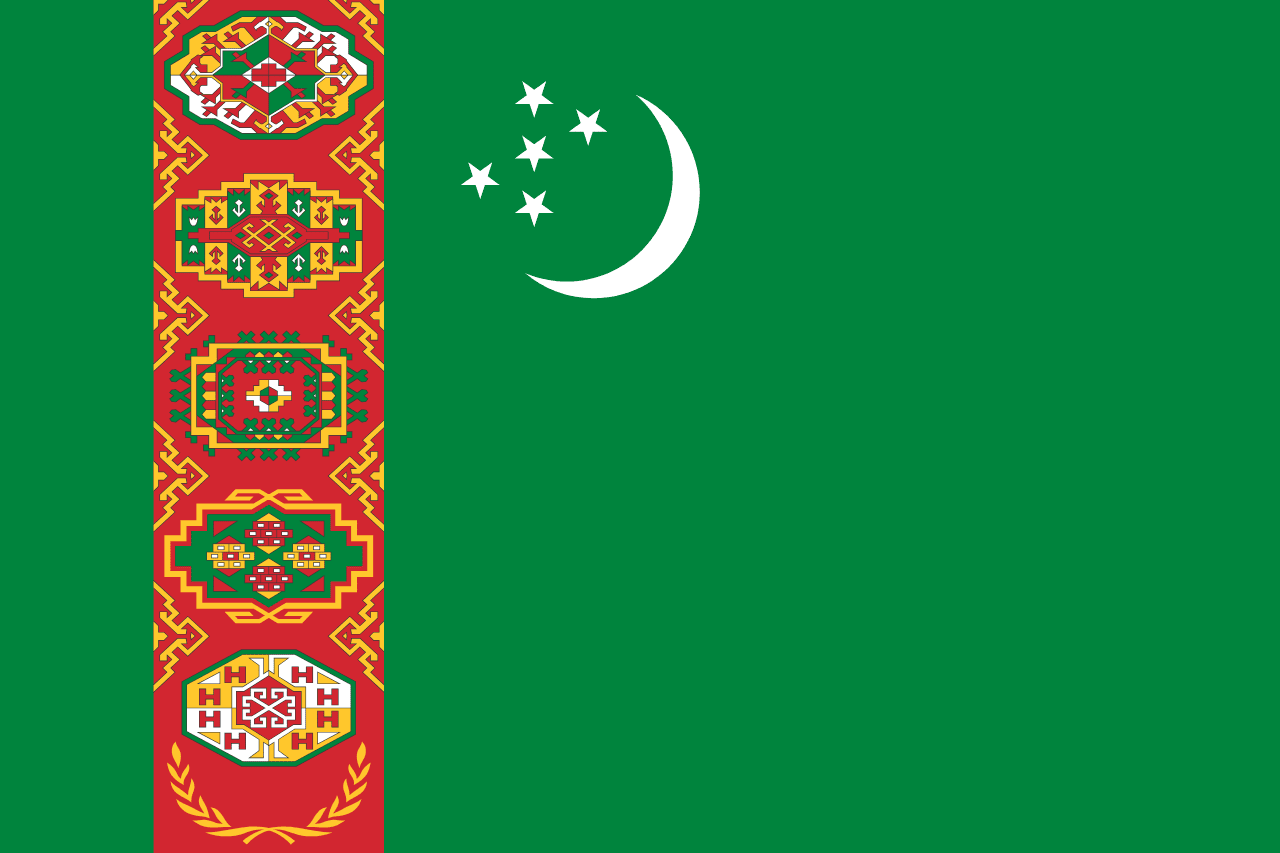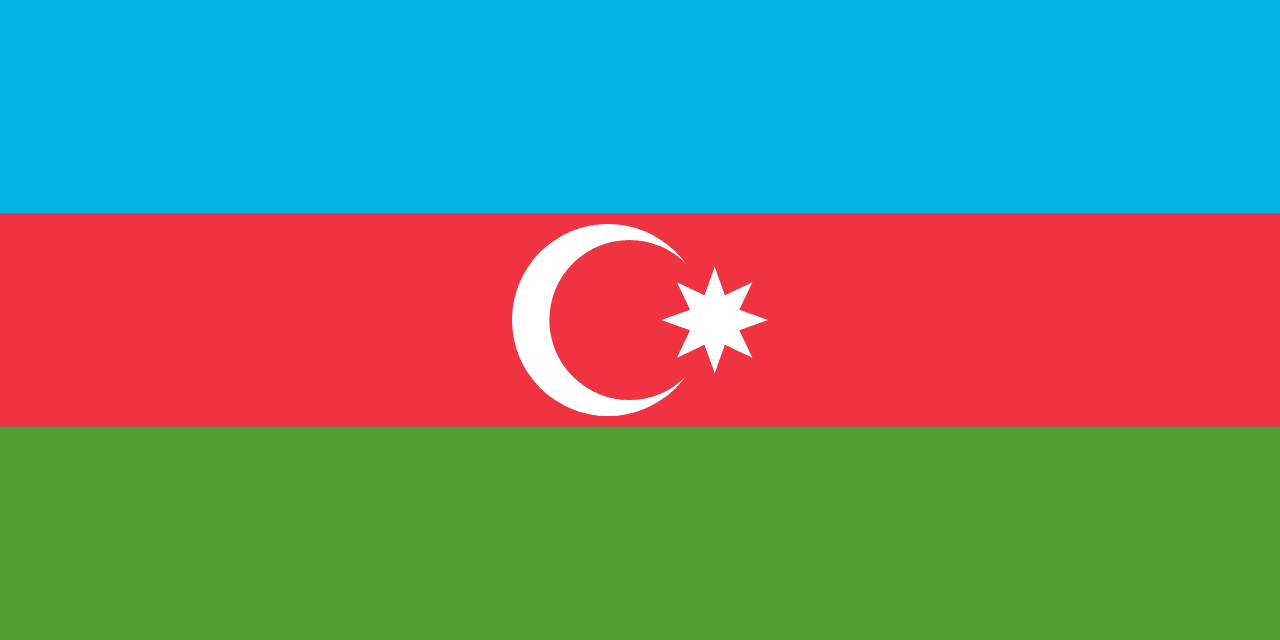Iran Flag Meaning
Three horizontal stripes of green, white, and red with a stylized emblem in the center and repeated 'Allahu Akbar' text along the borders, representing the Islamic Republic of Iran and the principles of the 1979 Islamic Revolution.
- Continent
- Asia
- Adopted
- 1980
- Ratio
- 4:7
- Colors
- green, white, red
- Designer
- Hamid Nadimi

Symbolism
Green Stripe: Represents Islam and the Islamic faith that forms the foundation of the Islamic Republic, symbolizing growth, nature, and the spiritual values that guide Iranian society under Islamic governance.
White Stripe: Represents peace and honesty, symbolizing the purity of intentions and the hope for harmony both within Iranian society and in international relations, reflecting Islamic values of justice and fairness.
Red Stripe: Represents courage and martyrdom, symbolizing the blood shed by those who died for Iran and the sacrifices made during the Islamic Revolution and the Iran-Iraq War to defend the nation and its Islamic principles.
Central Emblem: A stylized representation of the word 'Allah' designed to resemble a tulip (symbol of martyrdom), featuring four crescents and a sword, representing the five principles of Islam and divine guidance over the Islamic Republic.
Border Text: The phrase 'Allahu Akbar' (God is Greatest) repeated 22 times along the borders of the green and red stripes, commemorating the date of the Islamic Revolution (22 Bahman 1357 in the Persian calendar).
History
- 550 BCE - 1979 CE: Various Persian empires and dynasties used different symbols and colors, including the lion and sun symbol during the Pahlavi dynasty (1925-1979), representing pre-Islamic Persian heritage and monarchy.
- February 1979: The Islamic Revolution led by Ayatollah Khomeini overthrew the Pahlavi monarchy, establishing the Islamic Republic and beginning the process of creating new national symbols reflecting Islamic governance.
- July 29, 1980: The current flag was officially adopted by the Islamic Republic, replacing the Pahlavi-era lion and sun symbol with Islamic emblems and text, marking the complete transformation to an Islamic state.
- 1980-1988: The flag flew during the Iran-Iraq War, representing the Islamic Republic's resistance against Iraqi invasion and its defense of revolutionary principles during eight years of conflict.
- 1979-Present: The flag has represented Iran through its transformation into a theocratic republic, international sanctions, nuclear program development, and regional influence in Middle Eastern affairs.
Trivia
- Iran is home to Persepolis, the ceremonial capital of the ancient Persian Empire, showcasing the country's rich pre-Islamic heritage that spans over 2,500 years.
- The flag represents the world's oldest wine-making region, with archaeological evidence of wine production dating back 7,000 years in the Zagros Mountains.
- Iran has 24 UNESCO World Heritage Sites, more than any other Middle Eastern country, representing both ancient Persian and Islamic architectural treasures.
- The flag flies over a country that is home to the world's largest hand-woven carpet, displayed in the Sheikh Zayed Grand Mosque in Abu Dhabi but made in Iran.
- Persian (Farsi) is the official language, and Iran is the largest Persian-speaking country, with the language also spoken in Afghanistan and Tajikistan.
- Iran sits on approximately 10% of the world's proven oil reserves and has the second-largest natural gas reserves globally, making energy a crucial part of its economy.
- The flag represents the birthplace of polo, chess, and the windmill, with these innovations spreading from Persia to other parts of the world.
- Isfahan, known as 'half the world' during the Safavid period, contains some of the most beautiful Islamic architecture, including the stunning Shah Mosque.
- Iran follows the Persian solar calendar, making it one of the few countries not using the Gregorian calendar, with the new year (Nowruz) celebrated at the spring equinox.
- The flag represents a country with a highly educated population, where women comprise over 60% of university students despite social restrictions.
- Iran's carpet weaving tradition is so renowned that 'Persian rug' has become synonymous with high-quality hand-woven carpets worldwide.
- The country is home to the ancient Zoroastrian religion, founded by the prophet Zoroaster, which influenced later monotheistic religions including Judaism, Christianity, and Islam.
- Iran has a rich cinematic tradition, with directors like Abbas Kiarostami and Asghar Farhadi winning international acclaim and Academy Awards.
- The flag flies over a country that contains the world's largest brick dome at the Jameh Mosque of Isfahan, showcasing medieval Islamic architectural achievement.
- Iran's saffron production accounts for about 90% of the world's supply, making this precious spice one of the country's most valuable agricultural exports.
Related Countries

Kuwait
Asia
Three horizontal stripes of green, white, and red with a black trapezoid on the hoist side, representing Kuwait's position in the Arab world and its transformation from pearl diving to oil wealth in the Arabian Gulf.

Bahrain
Asia
A white band on the hoist side separated from a red field by a serrated line with five triangular points, representing peace and the five pillars of Islam, while the red represents the Kharijite sect of Islam that historically dominated the region.

Qatar
Asia
A national flag divided vertically with a broad white band on the hoist and a larger maroon field separated by nine white serrated points. Qatar’s unique flag ratio and color reflect its history and independence.

Turkmenistan
Asia
A green field with a vertical red stripe containing five traditional carpet guls (patterns) on the hoist side, and a white crescent moon with five stars in the upper left, representing Islam, the traditional carpet weaving culture, neutrality, and the five regions and senses of Turkmenistan.

Iraq
Asia
Three horizontal stripes of red, white, and black (Pan-Arab colors) with 'Allahu Akbar' (God is Greatest) written in green Arabic Kufic script across the white stripe, representing Arab unity, Islamic faith, and Iraqi sovereignty.

Azerbaijan
Asia
Three horizontal stripes of blue, red, and green with a white crescent and eight-pointed star in the center, representing Turkic heritage, modernity and progress, Islamic tradition, and the eight branches of the Turkic peoples, designed during the brief independence period of 1918-1920.